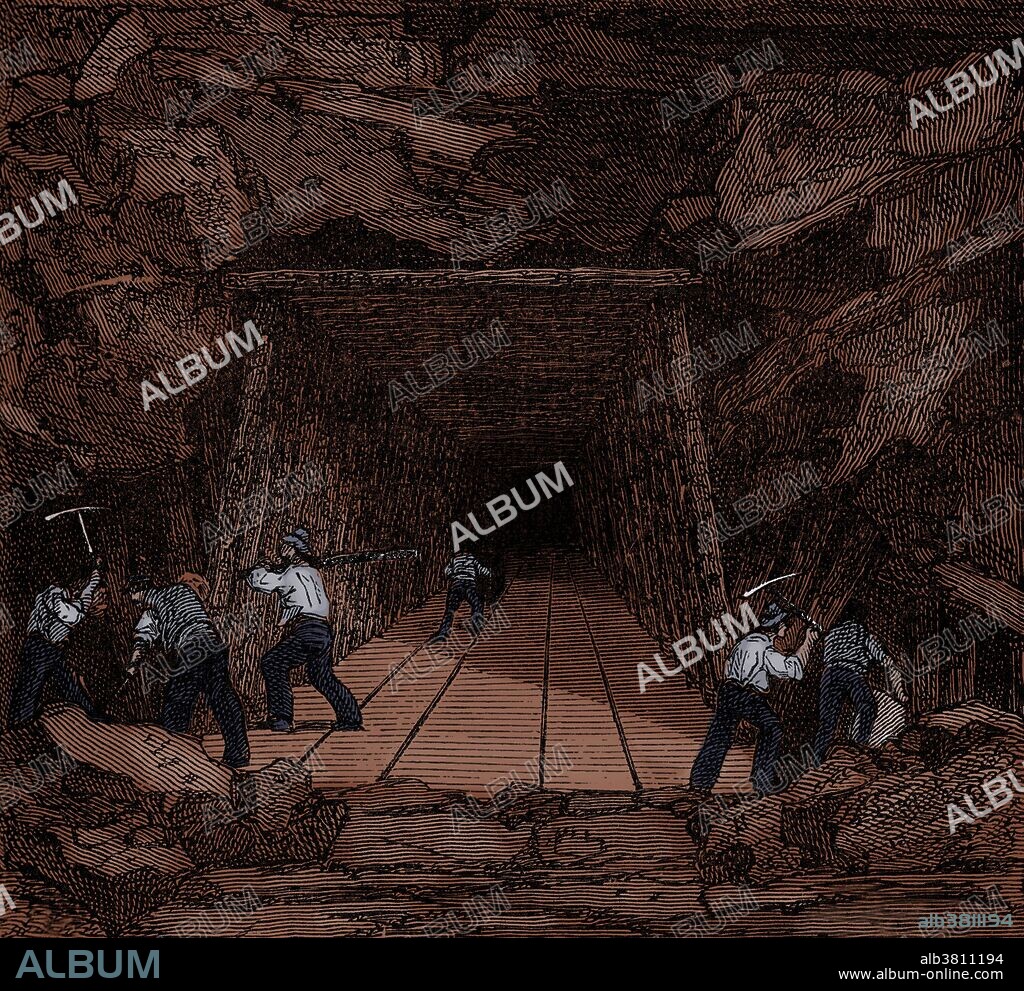alb3811194
Construction of Railroad Tunnel, 19th Century

|
Añadir a otro lightbox |
|
Añadir a otro lightbox |



¿Ya tienes cuenta? Iniciar sesión
¿No tienes cuenta? Regístrate
Compra esta imagen

Título:
Construction of Railroad Tunnel, 19th Century
Descripción:
Traducción automática: Un túnel es un pasaje subterráneo o submarino, excavado a través del suelo/tierra/roca circundante y cerrado excepto para la entrada y la salida, comúnmente en cada extremo. Los túneles se excavan en tipos de materiales que varían desde arcilla blanda hasta roca dura. El método de construcción del túnel depende de factores tales como las condiciones del terreno, las condiciones del agua subterránea, la longitud y el diámetro del túnel, la profundidad del túnel, la logística de soporte de la excavación del túnel, el uso final y la forma del túnel. y una adecuada gestión de riesgos. Hay tres tipos básicos de construcción de túneles de uso común: Túnel a cielo abierto, construido en una zanja poco profunda y luego cubierto. Túnel perforado, construido in situ, sin remover el terreno superior. Suelen ser de sección circular o de herradura. Túnel de tubo sumergido, hundido en una masa de agua y colocado o enterrado justo debajo de su lecho
A tunnel is an underground or underwater passageway, dug through the surrounding soil/earth/rock and enclosed except for entrance and exit, commonly at each end. Tunnels are dug in types of materials varying from soft clay to hard rock. The method of tunnel construction depends on such factors as the ground conditions, the ground water conditions, the length and diameter of the tunnel drive, the depth of the tunnel, the logistics of supporting the tunnel excavation, the final use and shape of the tunnel and appropriate risk management. There are three basic types of tunnel construction in common use: Cut-and-cover tunnel, constructed in a shallow trench and then covered over. Bored tunnel, constructed in situ, without removing the ground above. They are usually of circular or horseshoe cross-section. Immersed tube tunnel, sunk into a body of water and laid on or buried just under its bed.
Crédito:
Album / Science Source
Autorizaciones:
Modelo: No - Propiedad: No
¿Preguntas relacionadas con los derechos?
¿Preguntas relacionadas con los derechos?
Tamaño imagen:
3900 x 3573 px | 39.9 MB
Tamaño impresión:
33.0 x 30.3 cm | 13.0 x 11.9 in (300 dpi)
Palabras clave:
ARTE • CIENCIA • COLOREADA • CONSTRUCCION • DIBUJO • DISEÑO • FERROCARRIL • GRABADO • HISTORIA • HISTORICO • HOMBRES • ILUSTRACION • INGENIERIA CIVIL • INGENIERÍA • MAYOR • MEJORA • OBRA DE ARTE • SIGLO XIX • SUBTERRANEO • TECNOLOGÍA • TECNOLÓGICA • TRABAJADORES • TRANSPORTE • TUNEL
 Pinterest
Pinterest Twitter
Twitter Facebook
Facebook Copiar enlace
Copiar enlace Email
Email
